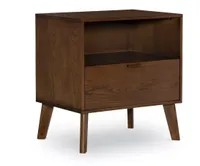10 ways to create a transitional-style bedrooms that will make you feel instantly relaxed
This calming and harmonious interior design trend is perfect for where you'll sleep. Find out how to create transitional-style bedrooms from our experts
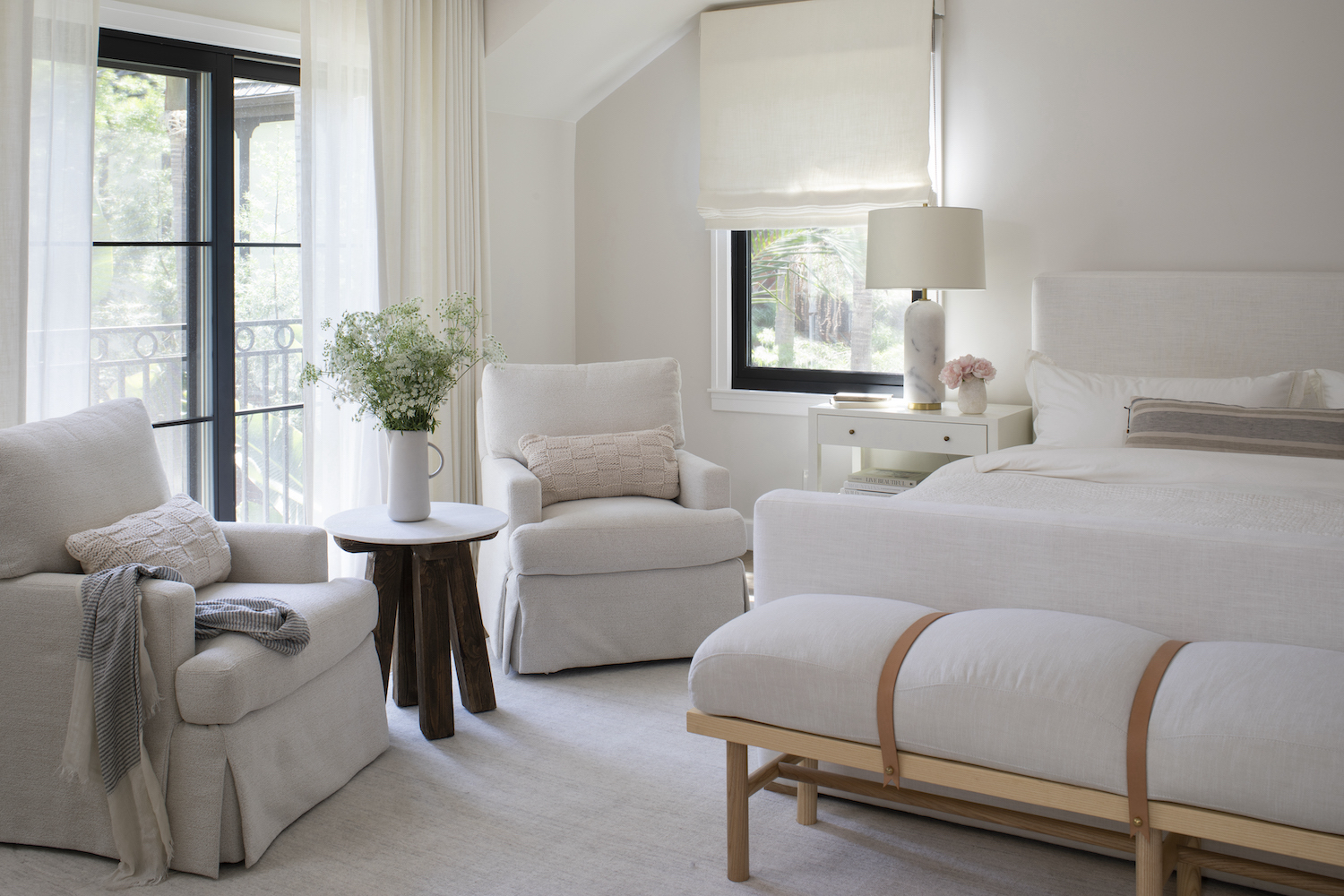
It’s rare to like one design style or era exclusively, and most of us end up buying or inheriting multiple contrasting pieces over the course of our lives. Thankfully, transitional-style bedrooms are a place where we can blend those different pieces together, creating spaces that are both eclectic and perfectly balanced.
“The transitional style combines design elements of traditional style, which sometimes can be too serious, with modern or contemporary elements, which can sometimes be too streamlined,” says Cinzia Moretti, Creative Director of Moretti Interior Design. “Together, they make something that is fresher and more interesting.”
Principal Designer Breeze Giannasio describes transitional design as a “mediator” between contemporary and traditional interiors. “It harmonizes the accessible comfort and warmth of a traditional aesthetic with the restraint and minimalism of contemporary design,” she says. “I love mixing eras to give a layered, collected look to a space.”
However, while the end result might look effortless, getting the balance right in transitional design takes careful planning. Here, design experts share their top 10 tips for mastering a transitional style bedroom.
10 ways to create a transitional style bedroom
1. Always be mindful of proportions
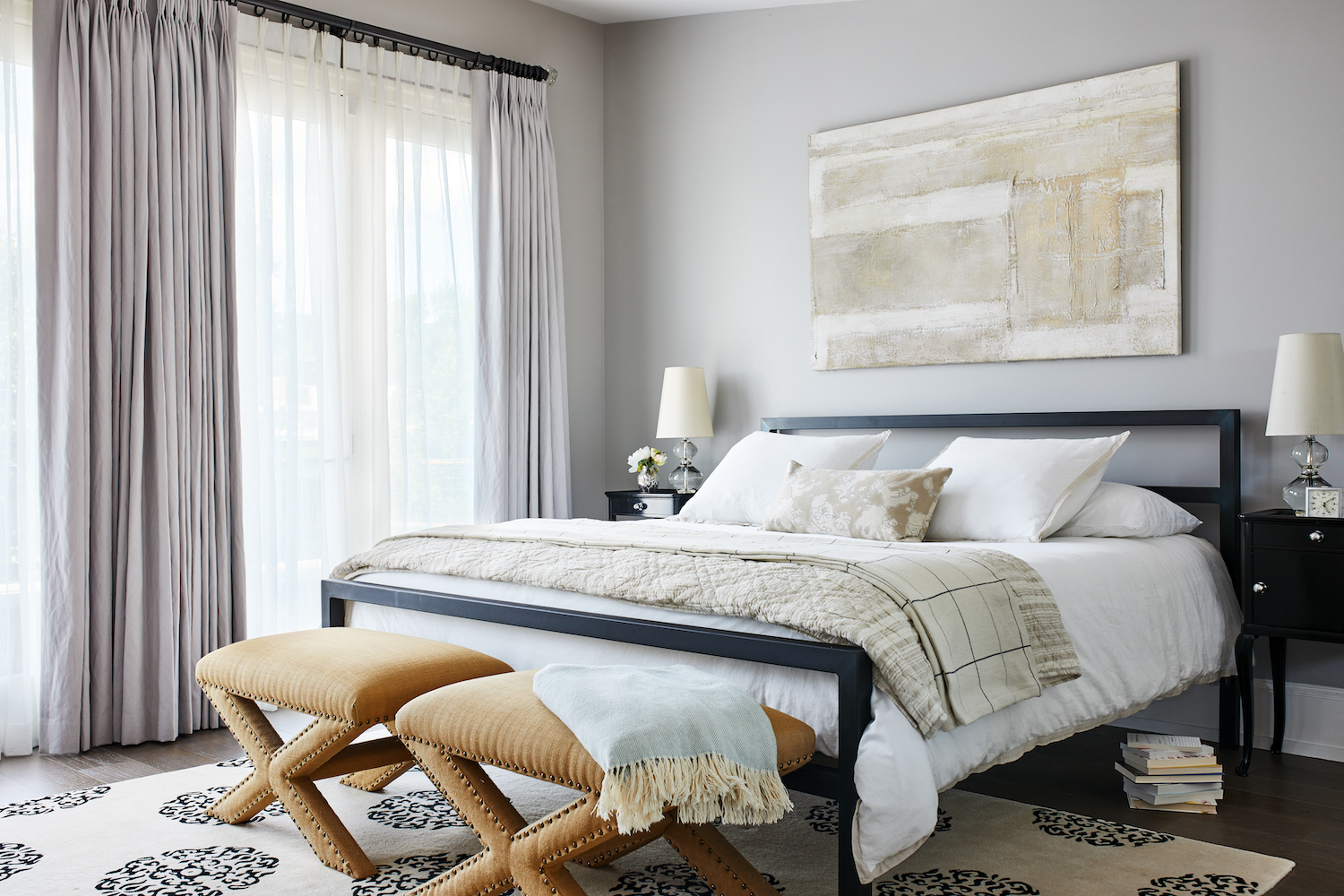
Start by carefully thinking about the space you have available. Achieving balance is absolutely critical for a transitional-style modern bedroom, so your furniture must be the right size for the room and never look crammed-in.
“In general, the key thing to watch when creating any transitional room is the proportions,” says Cinzia Moretti. “The layout and proportions are important when it comes to creating balance and harmony, therefore decisions about where to put your furniture and how high to hang the curtains are important. Especially when taking elements from different eras, it’s really easy to lose control of balance if the design is not done thoughtfully.”
Place at the foot of your bed for a quick touch of modern rustic style, blending against more contemporary materials and finishes.
2. Consider how different pieces relate to each other
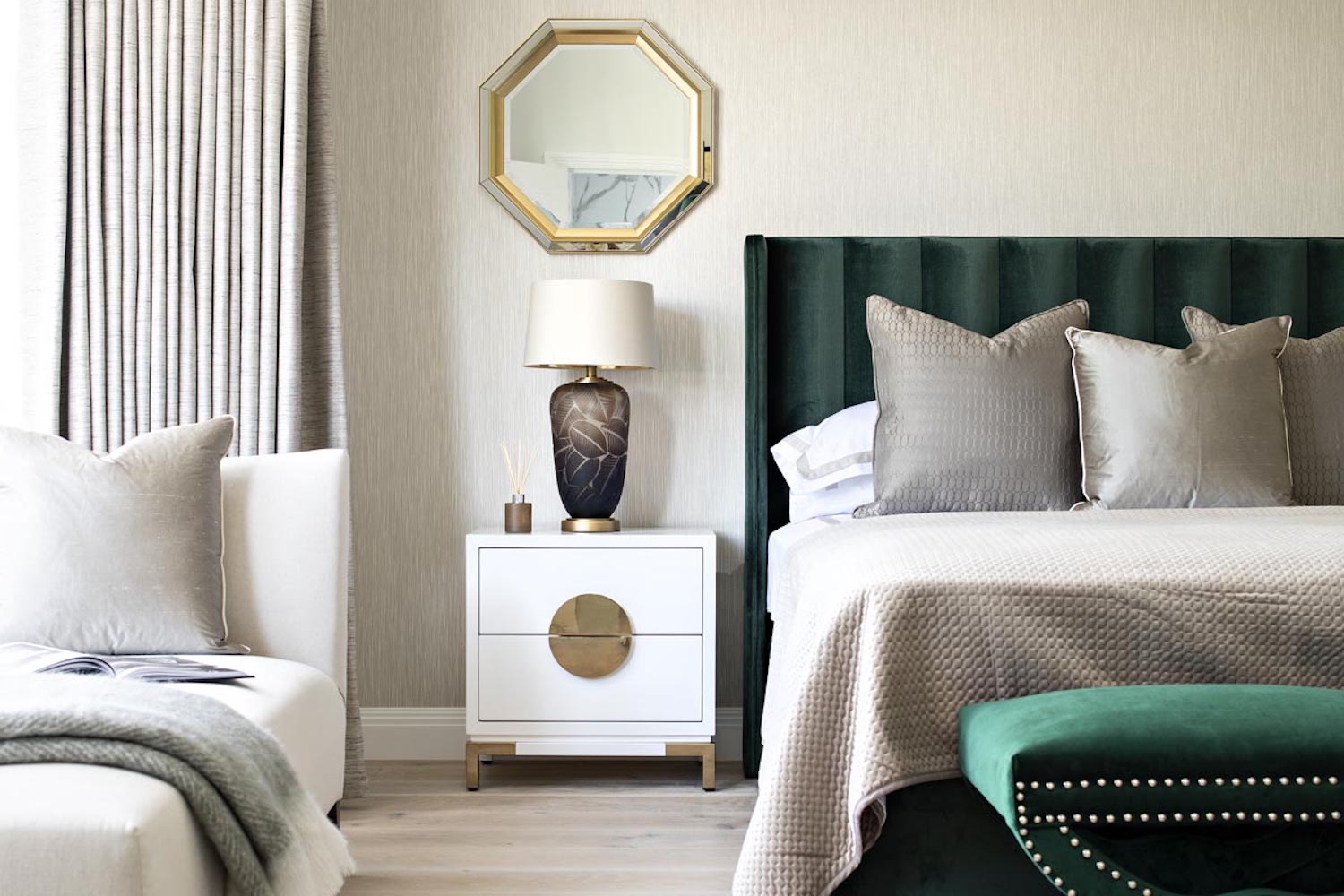
Combining pieces from different eras together should never look random. Whether it’s the contrasting wooden textures of your traditional wardrobe and modern vanity, or pink hues in both your vintage curtains and marble table lamp, disparate items should speak to each other. In the photo above, the green of the headboard speaks to the green ottoman, as well as the deeper hues in the bedside vase.
The Livingetc newsletters are your inside source for what’s shaping interiors now - and what’s next. Discover trend forecasts, smart style ideas, and curated shopping inspiration that brings design to life. Subscribe today and stay ahead of the curve.
“Pieces are continually in dialogue with one another and must relate, either in kinship or in active juxtaposition,” says Breeze Giannasio. “Sometimes it’s the dynamic tension between pieces that creates a successful design marriage, other times it is the symmetry and similarity in a shape or motif as it runs through the space.”
3. Play with contrasting shapes
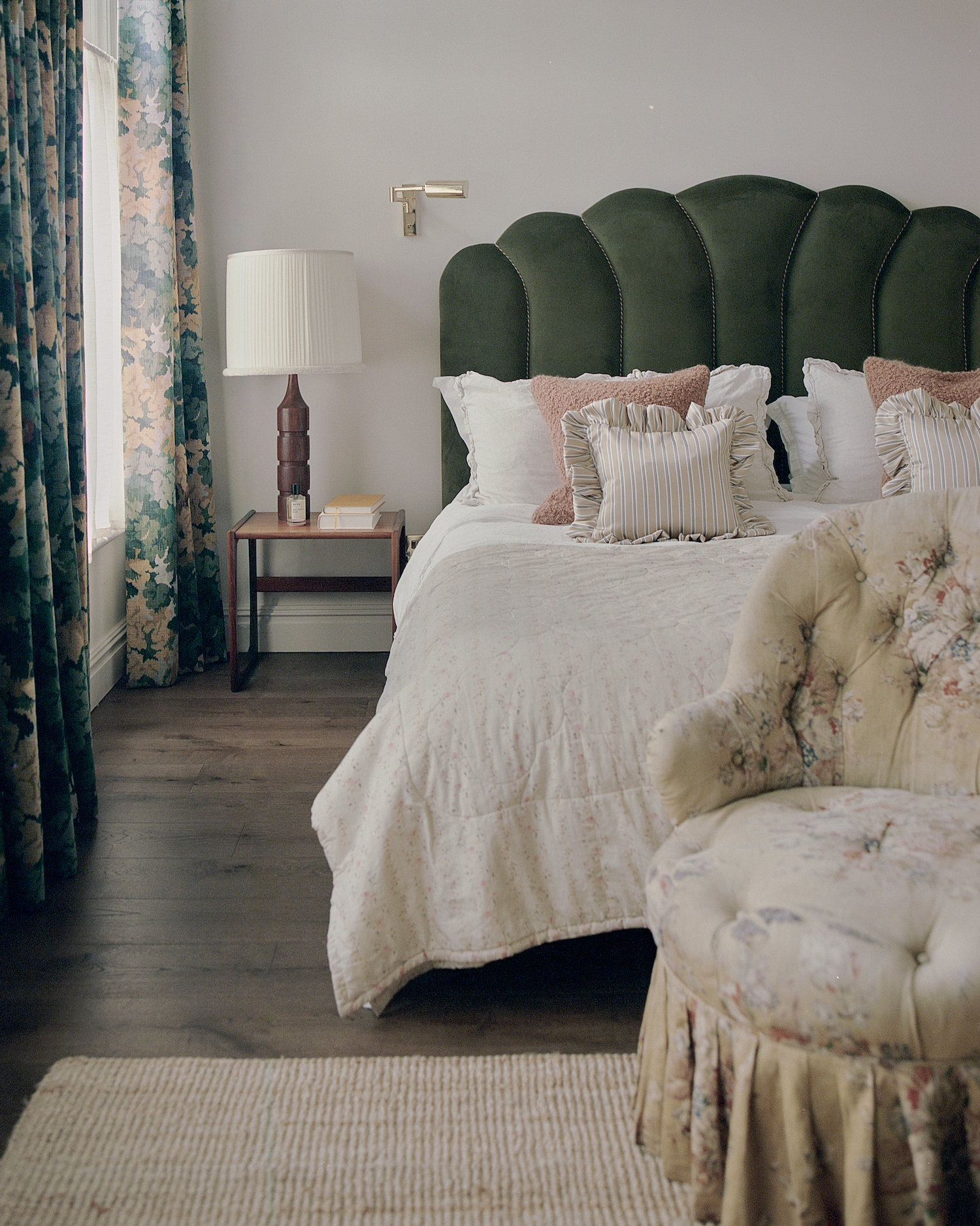
When you’re designing a transitional space you want to play with different types of contrast. As Cinzia Moretti advises, “another key element is to combine curves with straight lines.”
You might, for example, pair a curved headboard with sharp lines of a mid century bedside table like in the image above. Or place a wavy edged mirror next to the crisp lines of traditional cornicing.
Its legs have the sense of mid-century, stubby and slender and angled. Short and sweet.
4. Start with neutral colors
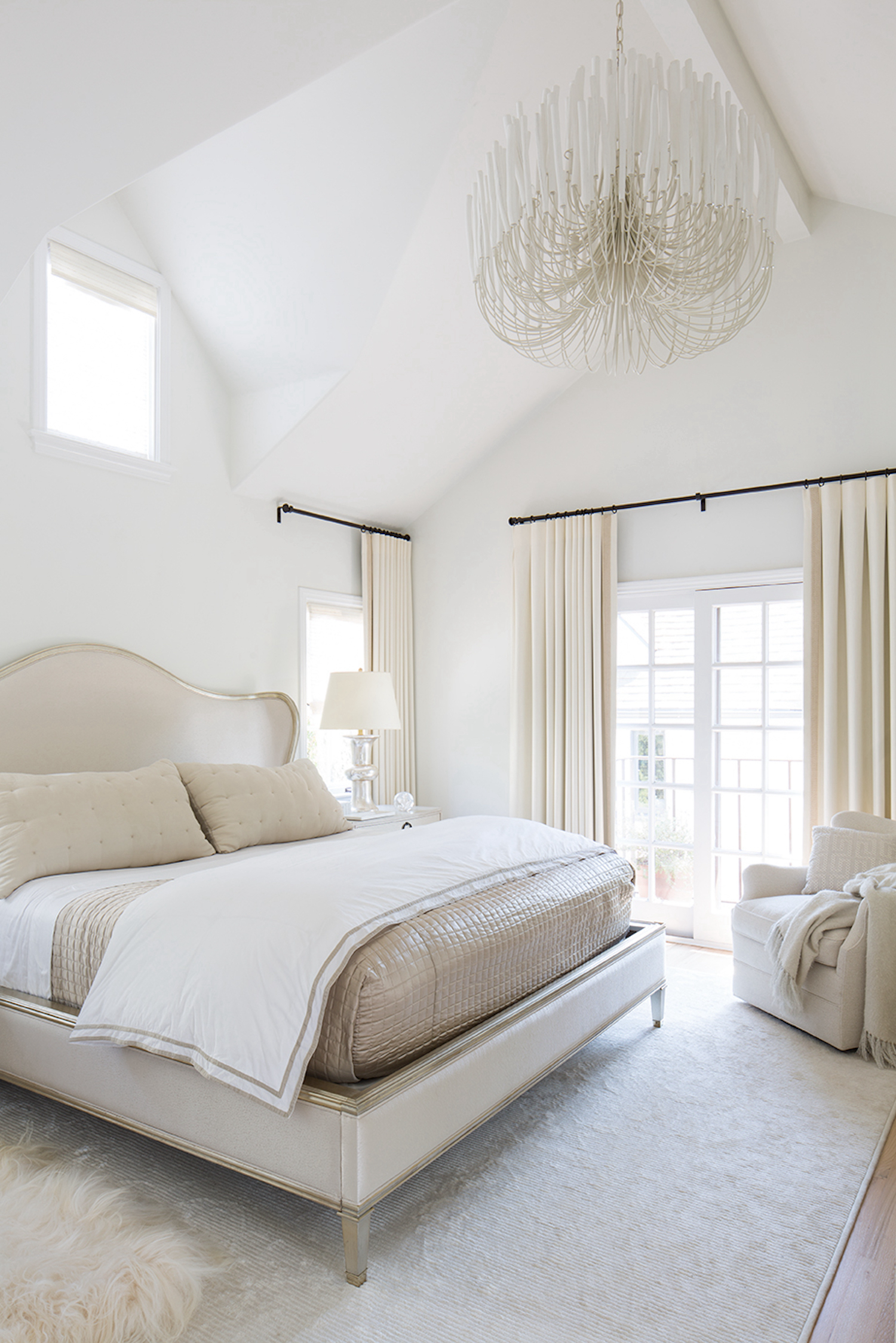
As we've seen in transitional-style kitchens, a neutral color scheme helps blend contrasting pieces together and gives the room a single ambiance. “A play of texture and silhouette often favors a muted, neutral palette over pattern and color,” says Breeze Giannasio.
Starting with neutral colors provides a calm foundation to help anchor the space. “Keep the color palette consistent, opt for complimenting shades of the same hue to tie the room together,” says Chelsea Clarke, Head of Brand at I Love Wallpaper.
5. Gently add natural, muted tones
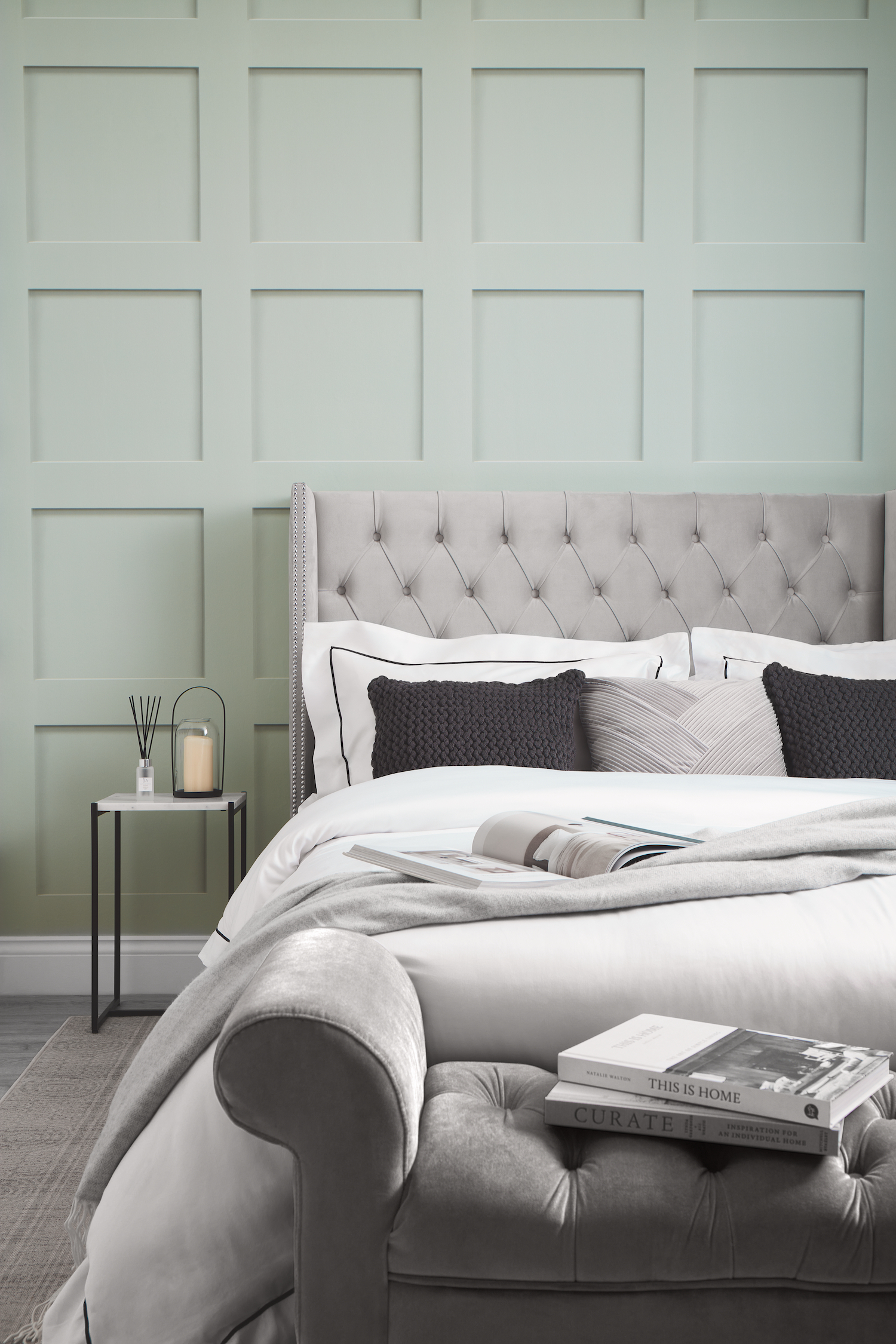
Once you’ve got a neutral bedroom base, you can start carefully bringing in livelier tones - but nothing too brash. “If you want to introduce some color, paint the wall behind the bed in a calming blue or green to add depth and texture to the room,” says Chelsea Clarke.
“Transitional color palettes are mostly built of neutral tones, however you can push the boat out and start experimenting with gentle colors. They should be tonal, muted and more subdued, avoiding bright pops or overly cheerful hues. If you don’t know where to start, stick to colors inspired by nature like blues and greens to retain a calming feel.”
6. Layer up textures on the bed
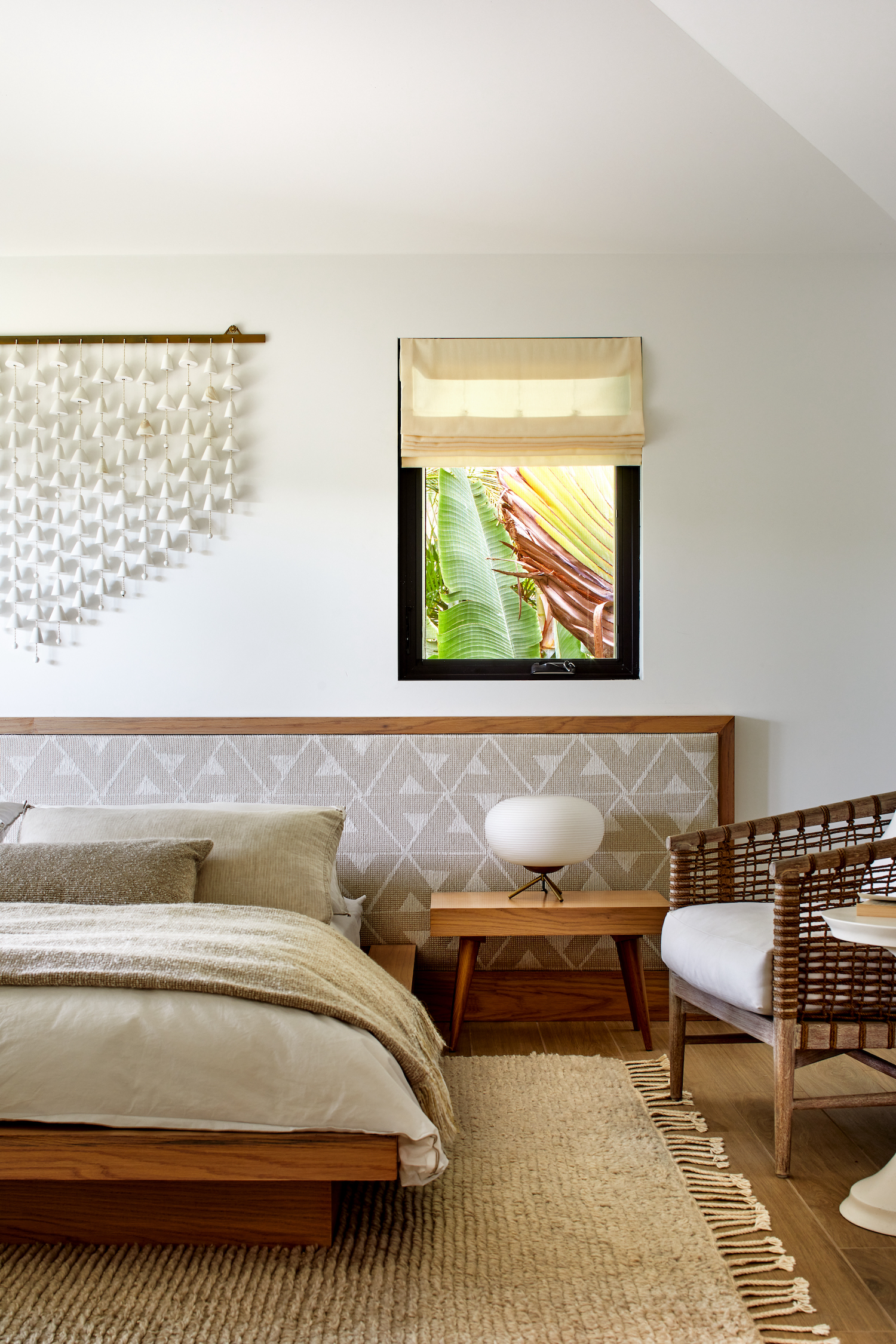
Another important tool for creating balance in transitional design is layering textures. “Because transitional style uses a mostly muted color palette, it is important to add visual interest with textures and materials to bridge the gap between two eras,” says Cinzia Moretti.
Bedrooms provide plenty of opportunity to do this, through textiles on the bed, curtains, and seating. “I like sticking to crisp white sheets or hotel bedding, with perhaps a textural throw and an interesting lumbar pillow,” says Breeze Giannasio.
Certain fabrics can also help your bedroom feel more relaxed. “I use textures to dress down a space,” says Jessica Schuler of J Renee Designs. “If I have lots of formal furniture pieces, I will use textured fabrics or a textured rug to bring it to a more casual state. Mixing the formal and casual in that way creates a transitional look.”
7. Avoid including anything too stylized
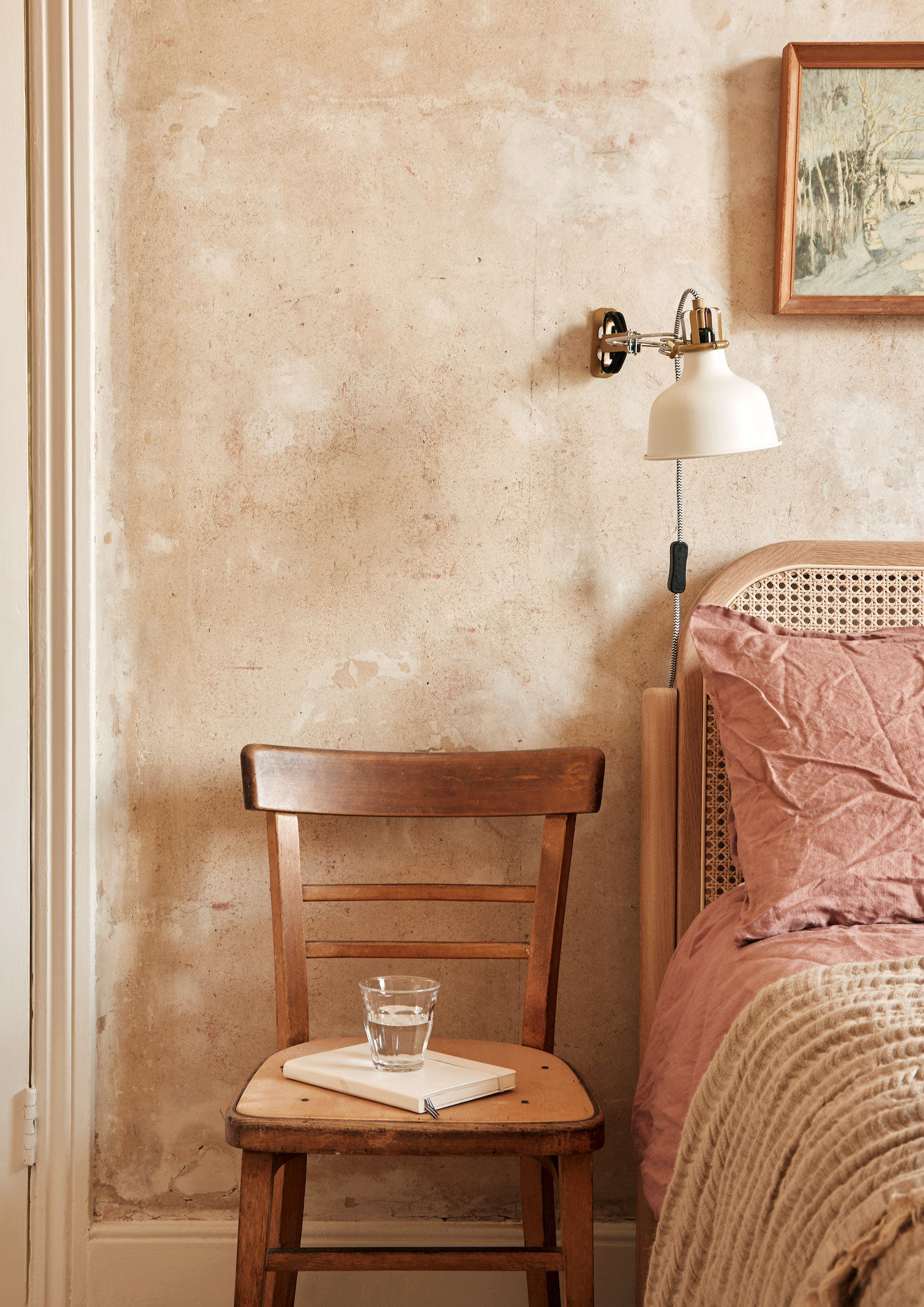
You’ll need to use your instincts when bringing different styles together, but the chances are, if something is overly stylized it will be very hard to blend in.
“Try to keep transitional style elements balanced so they don’t feel disjointed,” says Chelsea Clarke. “A canopy Victorian style bed may look out of place and extreme when placed next to other sleek, modern bedroom furniture and fixtures. So avoid pieces that are either extremely modern or extremely traditional. And don’t mix anything too futuristic with something too traditional.”
8. Go for classic accessories
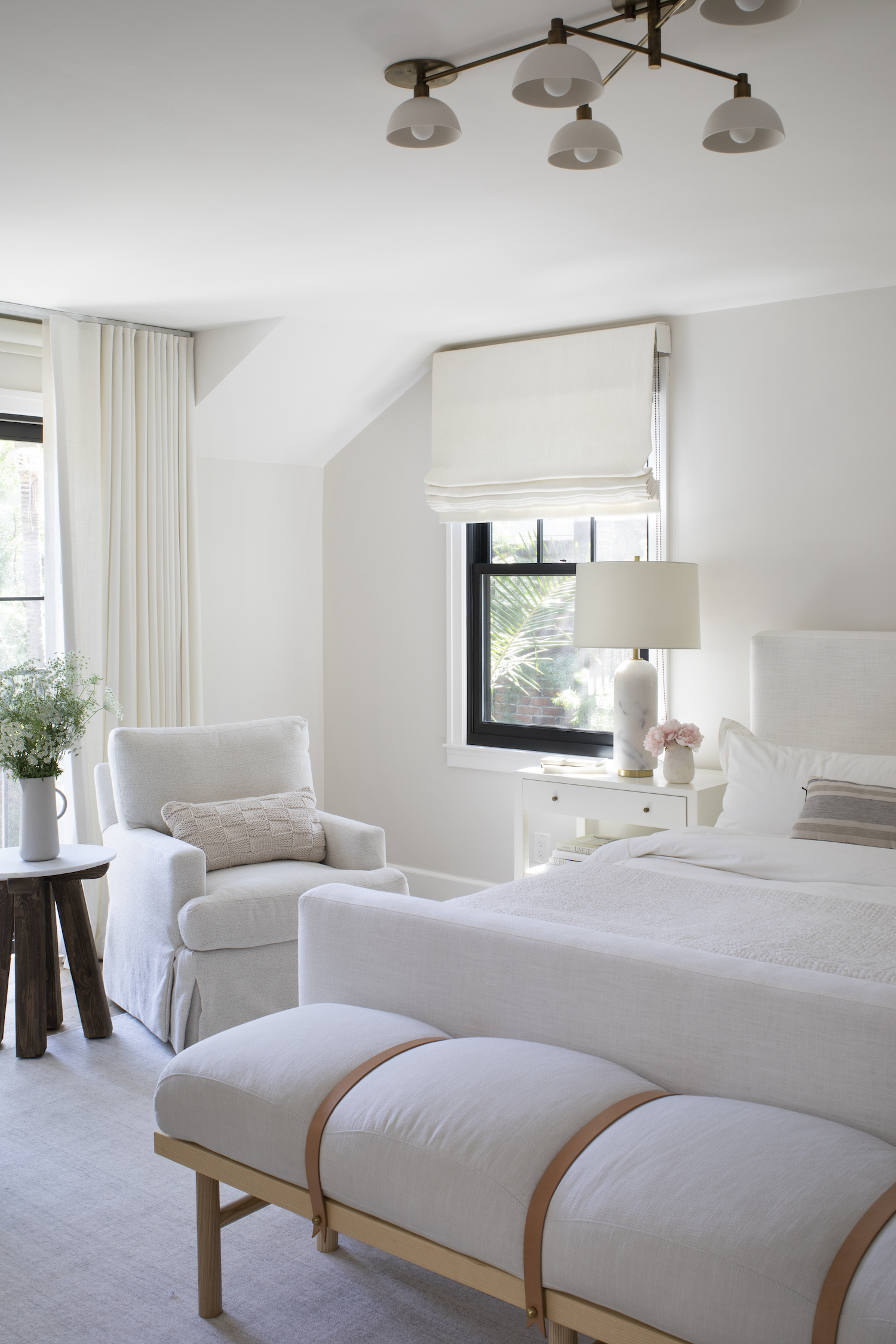
Just as we've seen in transitional-style dining rooms, it’s important to avoid overly stylised pieces of furniture. And it’s best to make sure that your accessories are easy to blend too.
“When selecting traditional accessories, opt for more classic pieces and stay away from the trendy or farmhouse items,” says Jessica Schuler. “These things tend to take over and gear your space more in that direction. The main component is to not overdo one style too much in the room. It really is about balancing out the modern elements with the traditional elements to achieve harmony.”
9. Choose natural materials to create calm
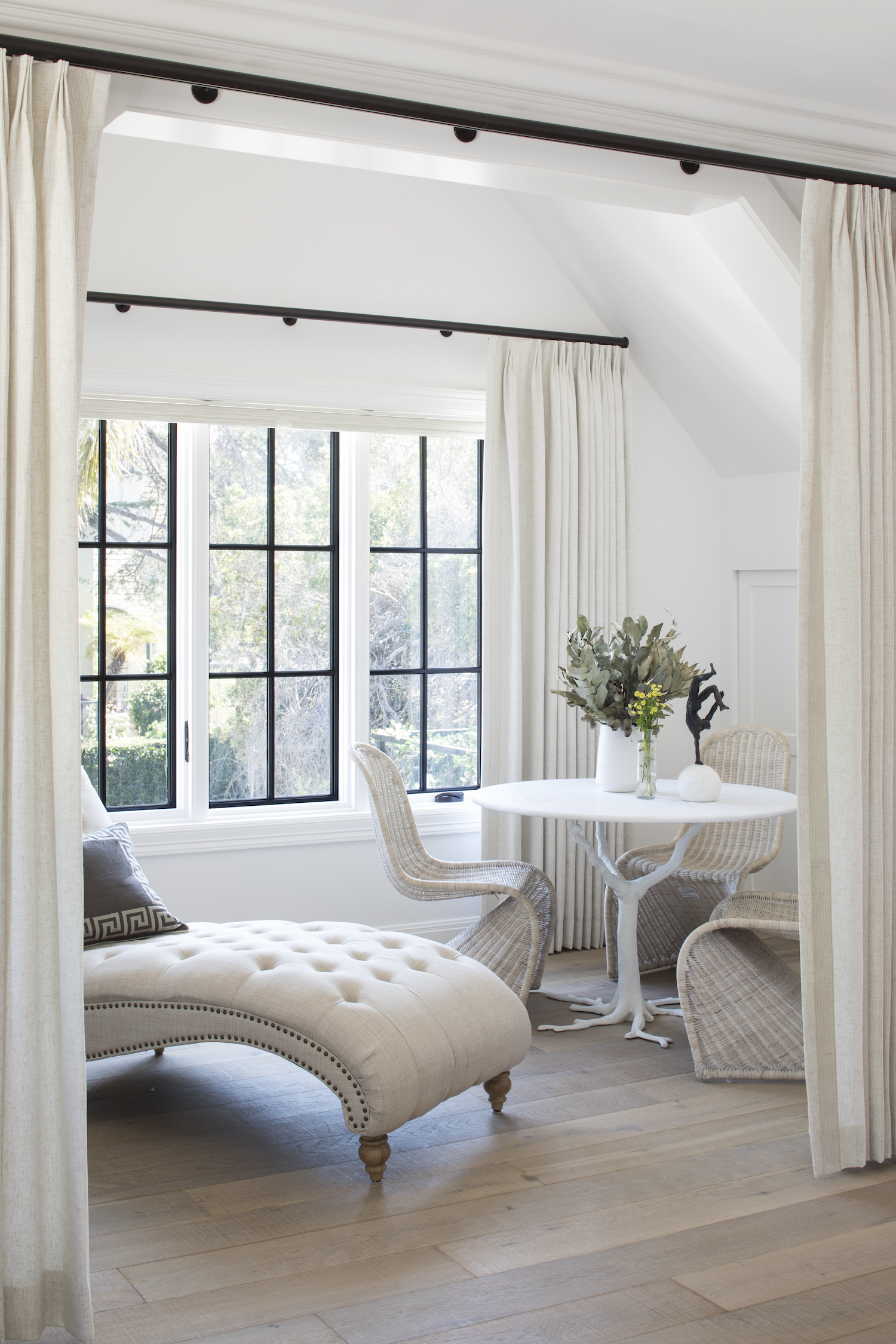
The kinds of fabrics and materials you choose can also help harmonize your space.
“Textures from nature like wood, marble and linen can help create a calming, welcoming atmosphere,” says Chelsea Clark. “When using transitional style to decorate a bedroom, you need to strike the perfect balance.”
10. Remember: less is more
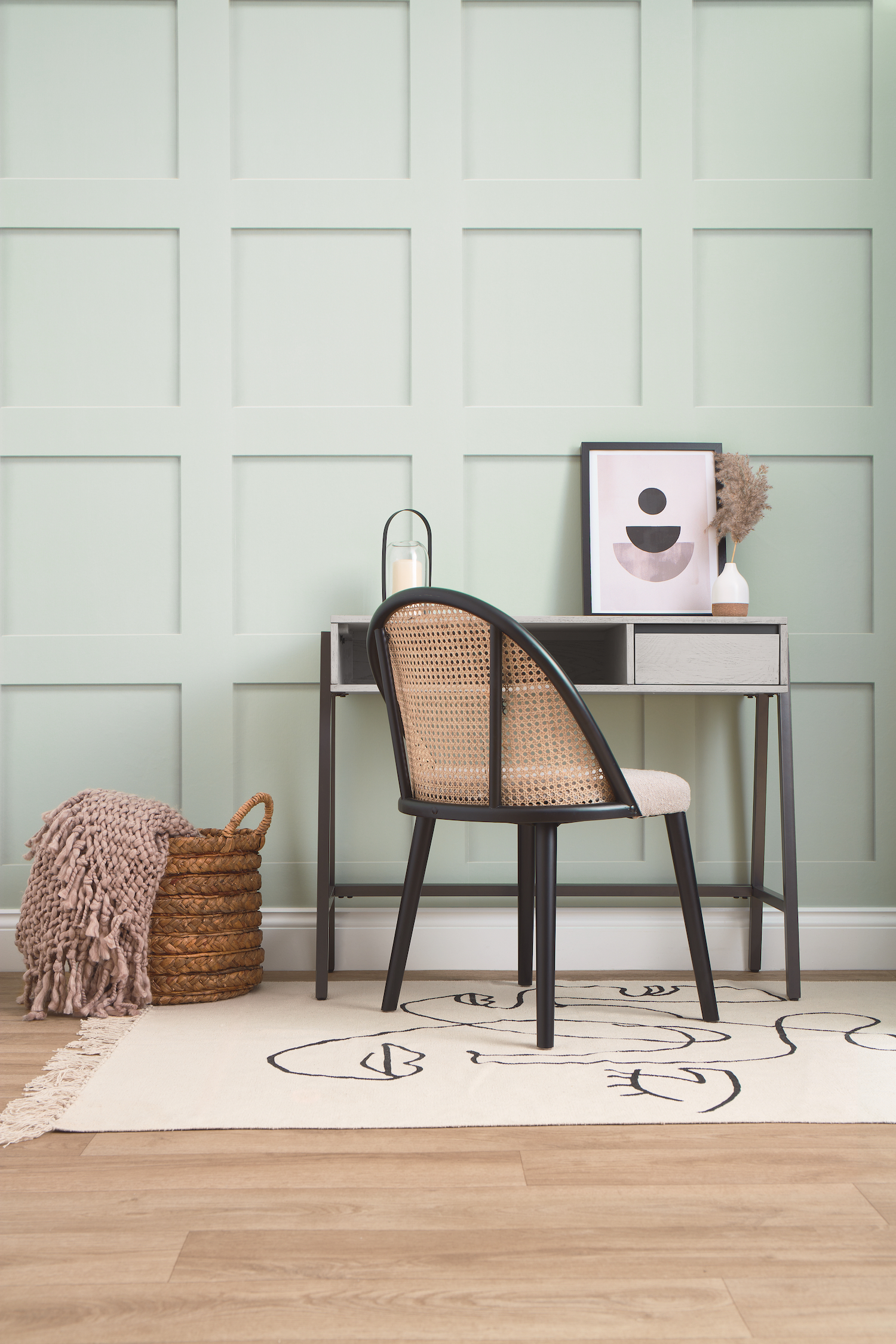
Exercising restraint is essential when creating any transitional style space, but there’s an argument to say this is particularly important for bedrooms. “When it comes to creating a room that’s for relaxation, like the bedroom, the saying ‘less is more’ is very appropriate,” says Cinzia Moretti.
“Do not overdo the quantity of pillows dressing the bed, but instead play with mixing textures among the upholstery and pillows. An upholstered bed combined with the right vintage bedside tables, for instance, can be really elegant and interesting.”
Kate Hollowood is a freelance journalist who writes about a range of topics for Marie Claire UK, from current affairs to features on health, careers and relationships. She is a regular contributor to Livingetc, specializing in reporting on American designers and global interiors trends. Based in London, Kate has also written for titles like the i paper, Refinery29, Cosmopolitan and It’s Nice That.

